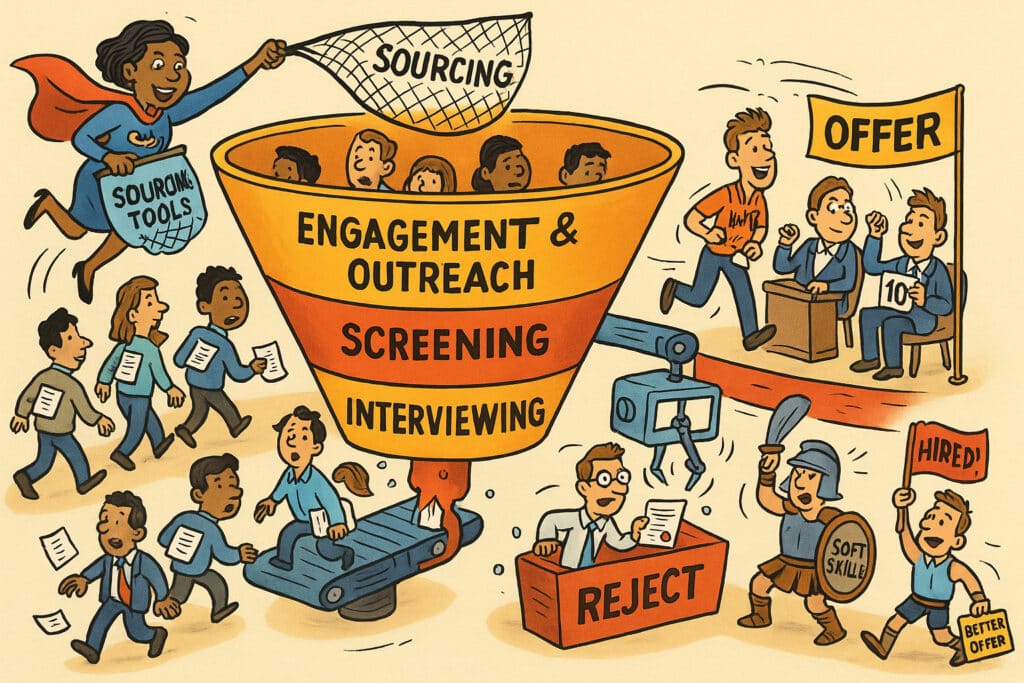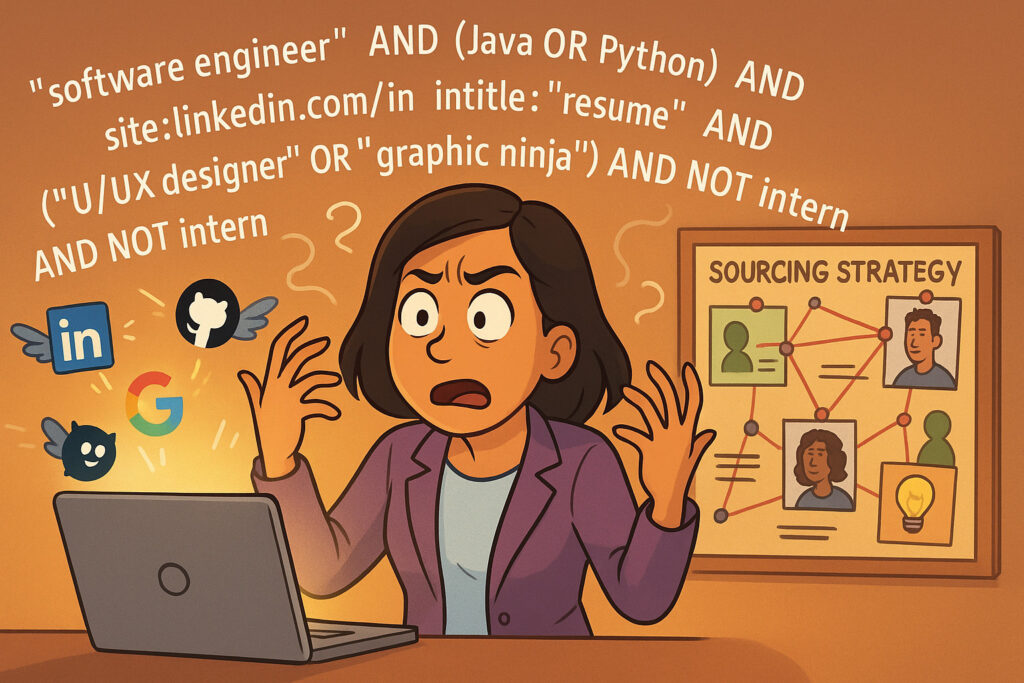Recruiting isn’t just about filling open roles—it’s about designing a smart, scalable funnel that turns strangers into standout hires. The best teams don’t just “hope for the best”; they map every step, use the right tech, and track what’s working (and what isn’t).
Let’s walk through every stage of a modern recruiting funnel—tools, tips, metrics, and a few real-world truths along the way.

1. Sourcing: Casting the Net (and Getting Creative)
Sourcing is ground zero for your recruiting funnel. It’s not just posting jobs and waiting—it’s about actively searching for talent before they even know they’re looking. Recruiters use every channel possible: job boards, social media, referrals, talent communities, and niche databases.
- Want tech talent? Don’t stop at LinkedIn—try SeekOut or HireEZ for AI-powered search, or AmazingHiring and Entelo to dig through GitHub, Stack Overflow, and beyond.
- Lusha or some of its alternatives
- For diverse pipelines, look for sourcing tools that offer diversity filters and advanced Boolean capabilities.
- And remember: the best sources are only as good as your follow-up. Integrate these tools with your ATS or CRM to keep candidate data organized and avoid losing leads in the shuffle.
2. Engagement & Outreach: The First Impression (That Really Counts)
You’ve got a list of names—now what? This is the make-or-break moment. Outreach that feels spammy or generic sends top talent running. Personalize your messages, use multi-step sequences, and monitor who bites.
- Gem can automate your outreach, track open and reply rates, and help you see what resonates.
- Tools like Mailshake or Mixmax make following up feel less like nagging, more like nurturing.
- If you’re in it for the long haul, platforms like Beamery or Hiretual CRM help manage ongoing relationships—think of them as the “memory bank” for passive talent.
- Want to get extra efficient? Paradox (Olivia) engages candidates via chatbot, answers FAQs, and even does basic screening—all before you step in.
Key metric: Response rate. If it’s low, your subject lines, message timing, or targeting might need work.
3. Screening: Filtering for Fit (Without Wasting Anyone’s Time)
This is where things get real. Screening weeds out the “not quite right” folks before they hit your hiring manager’s desk.
But don’t make it a black hole! The best teams blend automation, assessments, and a personal touch.
- An ATS like Greenhouse, Lever, or Workable helps automate resume review and early-stage communications.
- PrevueHR for most assessments.
- For technical roles, tools like HackerRank, Codility, or TestGorilla deliver skills assessments that actually show what candidates can do—not just what they say they can do.
- Use HireVue for structured video interviews—candidates answer the same questions, and AI helps flag potential fits.
Key metric: Conversion from screening to interview.
If too many drop out here, look at your criteria or candidate experience.
4. Interviewing: The Deep Dive (and Where Fit Matters Most)
Interviews aren’t just about hard skills—they’re about soft skills, team fit, and potential. Structure and consistency are your friends here.
- For virtual interviews, stick with what works: Zoom, Teams, or Google Meet. For large-scale or multi-interviewer scheduling, GoodTime takes the headache out of calendar chaos.
- Want to up your game? Tools like Notta.ai and bluedothq record and analyze interviews, so you can revisit candidate answers and reduce bias. Read more about note taker tools.
- Tech hiring? Try Karat or CoderPad for real-time, live coding environments.
Key metric: Time-to-interview.
Long delays = lost candidates. If you’re dragging out scheduling, you’re probably losing top talent to faster-moving competitors.
5. Offer: Sealing the Deal (Before Your Competitor Does)
You’ve picked your favorite. Now don’t lose them to a clunky offer process or slow decision-making!
- Send offers fast (and securely) with DocuSign or ZohoSign—no one wants to print, sign, and scan in 2024.
- For compensation, tools like Compa and Payscale help you craft competitive, market-driven offers.
- If your ATS has an offer module (like Greenhouse or Lever), use it to centralize and automate.
Key metric: Offer acceptance rate.
A low rate? Check your compensation, communication, or timing—and see if you’re missing out to the competition.
Why Visualizing the Funnel Matters (A Lot)
When you can see where candidates fall off—from outreach to screening, or interview to offer—you can fix what’s broken and double down on what’s working.
- A big drop after outreach? Rethink your messaging or targeting.
- Stuck in scheduling? Maybe you need a better interview tool—or more interviewer availability.
Pro tip:
Map your funnel and your tools at each stage. Overlaying metrics on top of that gives you a blueprint for improvement.
Final Thoughts: Make Your Recruiting Funnel Work for You
The recruiting funnel isn’t just HR lingo—it’s your roadmap to smarter, faster, better hires. With the right tools, clear stages, and a close eye on your funnel metrics, you’ll catch bottlenecks early, save time, and deliver a smoother candidate experience.
For growing teams, mapping your recruiting funnel means you don’t just fill jobs—you build a competitive hiring machine.
Want to see how this connects with the rest of your stack? Check out our guides to Applicant Tracking Systems (ATS) and Candidate Relationship Management (CRM) tools, or explore more on AI’s role in hiring.



